-
 Bitcoin
Bitcoin $115800
-2.47% -
 Ethereum
Ethereum $3690
1.19% -
 XRP
XRP $3.105
-1.91% -
 Tether USDt
Tether USDt $0.9999
-0.07% -
 BNB
BNB $771.0
0.19% -
 Solana
Solana $179.9
-3.54% -
 USDC
USDC $0.9998
-0.03% -
 Dogecoin
Dogecoin $0.2291
-3.40% -
 TRON
TRON $0.3140
0.81% -
 Cardano
Cardano $0.8007
-1.24% -
 Hyperliquid
Hyperliquid $42.92
-0.44% -
 Stellar
Stellar $0.4212
-2.16% -
 Sui
Sui $3.730
0.03% -
 Chainlink
Chainlink $18.06
0.03% -
 Bitcoin Cash
Bitcoin Cash $546.6
5.08% -
 Hedera
Hedera $0.2438
0.55% -
 Avalanche
Avalanche $23.57
-0.81% -
 Litecoin
Litecoin $114.2
1.04% -
 UNUS SED LEO
UNUS SED LEO $8.970
-0.35% -
 Shiba Inu
Shiba Inu $0.00001363
-0.16% -
 Toncoin
Toncoin $3.136
-0.89% -
 Ethena USDe
Ethena USDe $1.001
-0.04% -
 Uniswap
Uniswap $10.30
1.42% -
 Polkadot
Polkadot $4.013
-0.06% -
 Monero
Monero $324.8
0.87% -
 Dai
Dai $0.9999
-0.04% -
 Bitget Token
Bitget Token $4.509
-1.38% -
 Pepe
Pepe $0.00001226
-2.60% -
 Aave
Aave $291.8
1.34% -
 Cronos
Cronos $0.1294
2.19%
What does it mean that EMA5 crosses below EMA10?
When EMA5 crosses below EMA10, it signals bearish momentum in crypto markets, often prompting traders to consider exits or short positions.
Jul 24, 2025 at 06:28 am
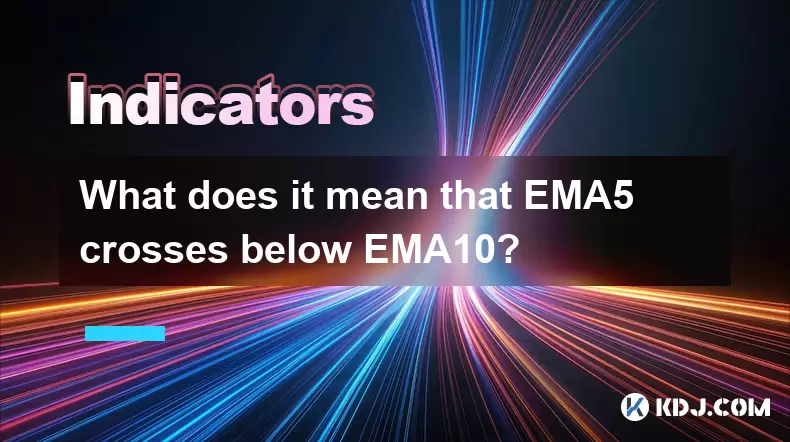
Understanding EMA5 and EMA10 in Cryptocurrency Trading
In the realm of cryptocurrency technical analysis, traders rely heavily on moving averages to interpret price trends and make informed decisions. Two of the most commonly used exponential moving averages (EMAs) are the EMA5 and EMA10. The EMA5 represents the exponential moving average calculated over the past five periods, typically five candlesticks on a chart (which could be 5 minutes, 5 hours, or 5 days depending on the timeframe). Similarly, the EMA10 tracks the average price over the last ten periods, giving less weight to older data points compared to simple moving averages due to its exponential nature. Because EMAs respond more quickly to recent price changes, they are favored by short-term traders in volatile markets like cryptocurrencies.
The key distinction between EMAs and simple moving averages (SMAs) lies in the weighting mechanism. EMAs apply more significance to recent prices, making them more sensitive to sudden price movements. This sensitivity is particularly useful in fast-moving crypto markets where delays in signals can result in missed opportunities or increased risk. When analyzing charts, traders visually plot both the EMA5 and EMA10 lines to detect potential shifts in momentum.
What Happens When EMA5 Crosses Below EMA10?
When the EMA5 crosses below the EMA10, it is interpreted as a bearish signal in technical analysis. This event is commonly referred to as a "death cross" in the context of shorter-term moving averages, indicating that short-term momentum is weakening relative to the slightly longer-term trend. Essentially, the average price over the past five periods has dropped below the average over the past ten, suggesting that selling pressure is increasing.
This crossover often occurs after a period of price consolidation or during a downtrend acceleration. For example, if Bitcoin has been trading sideways and suddenly drops in volume-backed sell-offs, the EMA5 may react faster and dip beneath the EMA10. Traders view this as a potential confirmation that the market sentiment is turning negative. It is not a standalone signal but is often used in conjunction with other indicators like volume, RSI, or MACD to confirm the strength of the bearish move.
How to Identify the EMA Crossover on a Trading Chart
To detect an EMA5 and EMA10 crossover, traders must first set up their charting platform correctly. Most cryptocurrency trading platforms such as TradingView, Binance, or Coinbase support custom indicators. The steps to visualize this are as follows:
- Open your preferred charting tool and select the cryptocurrency pair you are analyzing (e.g., BTC/USDT).
- Navigate to the "Indicators" section and search for "Exponential Moving Average."
- Add the first EMA with a period setting of 5 and assign it a distinct color (e.g., red).
- Add a second EMA with a period of 10 and choose a different color (e.g., blue).
- Observe the interaction between the two lines over time.
When the red line (EMA5) moves from above to below the blue line (EMA10), the crossover is confirmed. Some platforms allow setting up alerts so that you receive a notification the moment the crossover occurs, which is helpful for active traders who cannot monitor charts continuously.
Using EMA Crossovers in Trading Strategies
Traders incorporate the EMA5/EMA10 crossover into various strategies, particularly in scalping and day trading. One common approach is to use the crossover as a trigger to exit long positions or initiate short positions. For instance:
- Monitor the price action when the EMA5 begins to flatten after an uptrend.
- Watch for a close below the EMA10, especially if accompanied by rising trading volume.
- Confirm the bearish momentum using the Relative Strength Index (RSI) dropping below 50 or into oversold territory.
- Consider placing a sell order once the candle closes below both EMAs.
Risk management is crucial. Traders often place stop-loss orders just above the recent swing high or above the EMA10 to limit potential losses if the price reverses unexpectedly. Position sizing should also reflect the volatility of the cryptocurrency being traded, as assets like altcoins may exhibit sharper moves than Bitcoin.
It is important to note that false signals can occur, especially in choppy or low-volume markets. Therefore, combining the EMA crossover with support/resistance levels or candlestick patterns like bearish engulfing or dark cloud cover increases the reliability of the signal.
Limitations and Considerations of EMA Crossovers
While the EMA5 crossing below EMA10 is widely used, it is not infallible. In ranging or sideways markets, the two EMAs may cross back and forth multiple times, generating whipsaws—false signals that lead to losing trades. Cryptocurrency markets are particularly prone to such noise due to their high volatility and susceptibility to news-driven spikes.
Another consideration is the timeframe. On lower timeframes like 5-minute or 15-minute charts, crossovers occur more frequently but may lack significance. On higher timeframes such as the 4-hour or daily chart, the same crossover carries more weight because it reflects broader market sentiment. Therefore, traders should align the EMA strategy with their trading style—short-term traders may act on 15-minute crossovers, while swing traders wait for daily chart confirmations.
Additionally, the absence of volume confirmation can reduce the signal’s strength. A crossover on low volume might indicate a lack of conviction among traders, making the bearish interpretation less reliable.
Frequently Asked Questions
Can the EMA5/EMA10 crossover be used in bullish scenarios too?
Yes. When the EMA5 crosses above the EMA10, it is considered a bullish signal, indicating strengthening short-term momentum. Traders may use this as a cue to enter long positions or close short trades, especially when confirmed by rising volume and other bullish indicators.
Is this strategy effective for all cryptocurrencies?
The effectiveness varies. Major cryptocurrencies like Bitcoin and Ethereum tend to produce more reliable signals due to higher liquidity and trading volume. Low-cap altcoins with erratic price movements may generate frequent false crossovers, making the strategy less dependable without additional filters.
Should I rely solely on EMA crossovers for trading decisions?
No. While useful, EMA crossovers work best when combined with other tools. Using price action, volume analysis, and momentum oscillators like MACD or Stochastic RSI improves accuracy and reduces the risk of acting on misleading signals.
How do I adjust EMA settings for different timeframes?
The standard 5 and 10 periods work across timeframes, but some traders optimize them. For faster signals on 5-minute charts, settings like EMA3 and EMA8 may be used. On daily charts, traders might prefer EMA10 and EMA20 for smoother, more reliable trends. Always backtest adjustments using historical data before live trading.
Disclaimer:info@kdj.com
The information provided is not trading advice. kdj.com does not assume any responsibility for any investments made based on the information provided in this article. Cryptocurrencies are highly volatile and it is highly recommended that you invest with caution after thorough research!
If you believe that the content used on this website infringes your copyright, please contact us immediately (info@kdj.com) and we will delete it promptly.
- Pump, Bonk, Buyback: A Wild Ride in Crypto Town!
- 2025-07-25 19:10:12
- Punisher Coin, Dogecoin, Shiba Inu: Meme Coin Mania in the 2025 Crypto Landscape
- 2025-07-25 19:10:12
- Celestia's Token Control: Buyback & Staking Overhaul in Focus
- 2025-07-25 19:50:11
- Altcoins, Bitcoin, and Crypto Coins: What's Hot in the NYC Crypto Scene?
- 2025-07-25 19:55:52
- Litecoin Price Breakout Imminent? Rally Potential Explored!
- 2025-07-25 17:30:12
- Ether ETFs Surge, Bitcoin Wobbles: Is an ETH Breakout Imminent?
- 2025-07-25 16:50:12
Related knowledge

How to interpret that the KDJ D line is downward for a long time but the price is sideways?
Jul 25,2025 at 07:00pm
Understanding the KDJ Indicator and Its ComponentsThe KDJ indicator is a momentum oscillator widely used in cryptocurrency trading to assess overbough...

What does it mean that the KDJ indicator forms a double bottom at a low level?
Jul 25,2025 at 05:08pm
Understanding the KDJ Indicator in Cryptocurrency TradingThe KDJ indicator is a momentum oscillator widely used in cryptocurrency trading to identify ...
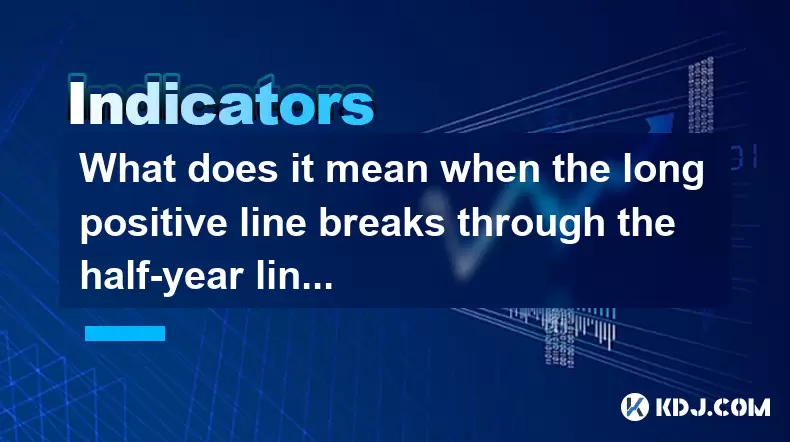
What does it mean when the long positive line breaks through the half-year line and then steps back?
Jul 25,2025 at 06:49pm
Understanding the Long Positive Line in Candlestick ChartsIn the world of cryptocurrency trading, candlestick patterns play a vital role in technical ...
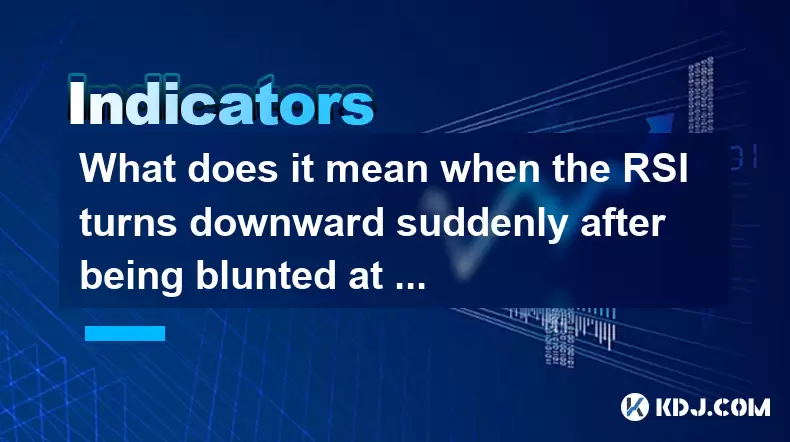
What does it mean when the RSI turns downward suddenly after being blunted at a high level?
Jul 25,2025 at 04:00pm
Understanding the RSI and Its Role in Technical AnalysisThe Relative Strength Index (RSI) is a momentum oscillator that measures the speed and change ...
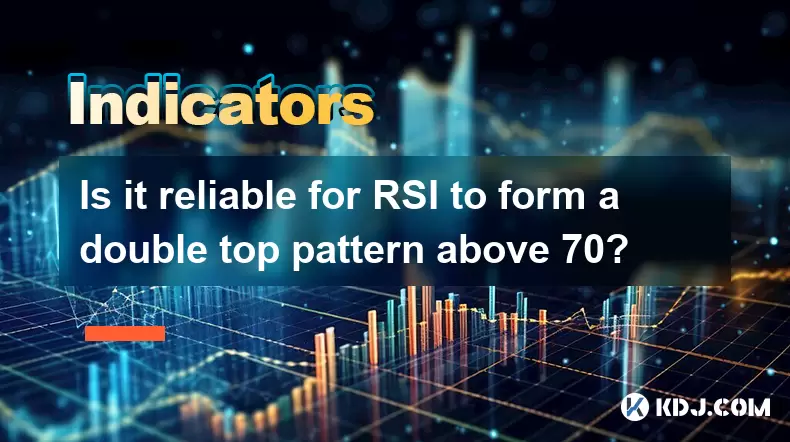
Is it reliable for RSI to form a double top pattern above 70?
Jul 25,2025 at 04:49pm
Understanding the RSI Indicator and Its Role in Technical AnalysisThe Relative Strength Index (RSI) is a momentum oscillator that measures the speed a...
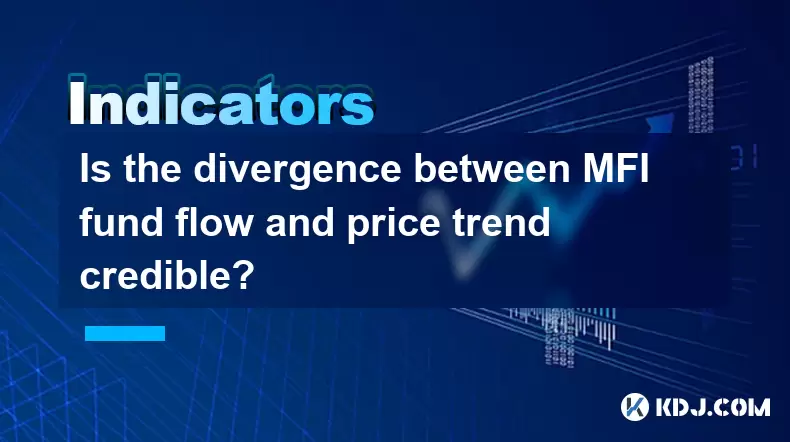
Is the divergence between MFI fund flow and price trend credible?
Jul 25,2025 at 12:01pm
Understanding MFI and Fund Flow in Cryptocurrency MarketsThe Money Flow Index (MFI) is a technical oscillator that combines price and volume to assess...

How to interpret that the KDJ D line is downward for a long time but the price is sideways?
Jul 25,2025 at 07:00pm
Understanding the KDJ Indicator and Its ComponentsThe KDJ indicator is a momentum oscillator widely used in cryptocurrency trading to assess overbough...

What does it mean that the KDJ indicator forms a double bottom at a low level?
Jul 25,2025 at 05:08pm
Understanding the KDJ Indicator in Cryptocurrency TradingThe KDJ indicator is a momentum oscillator widely used in cryptocurrency trading to identify ...

What does it mean when the long positive line breaks through the half-year line and then steps back?
Jul 25,2025 at 06:49pm
Understanding the Long Positive Line in Candlestick ChartsIn the world of cryptocurrency trading, candlestick patterns play a vital role in technical ...

What does it mean when the RSI turns downward suddenly after being blunted at a high level?
Jul 25,2025 at 04:00pm
Understanding the RSI and Its Role in Technical AnalysisThe Relative Strength Index (RSI) is a momentum oscillator that measures the speed and change ...

Is it reliable for RSI to form a double top pattern above 70?
Jul 25,2025 at 04:49pm
Understanding the RSI Indicator and Its Role in Technical AnalysisThe Relative Strength Index (RSI) is a momentum oscillator that measures the speed a...

Is the divergence between MFI fund flow and price trend credible?
Jul 25,2025 at 12:01pm
Understanding MFI and Fund Flow in Cryptocurrency MarketsThe Money Flow Index (MFI) is a technical oscillator that combines price and volume to assess...
See all articles

























































































